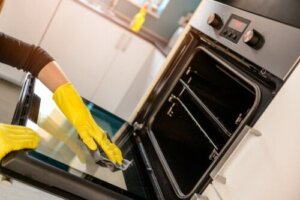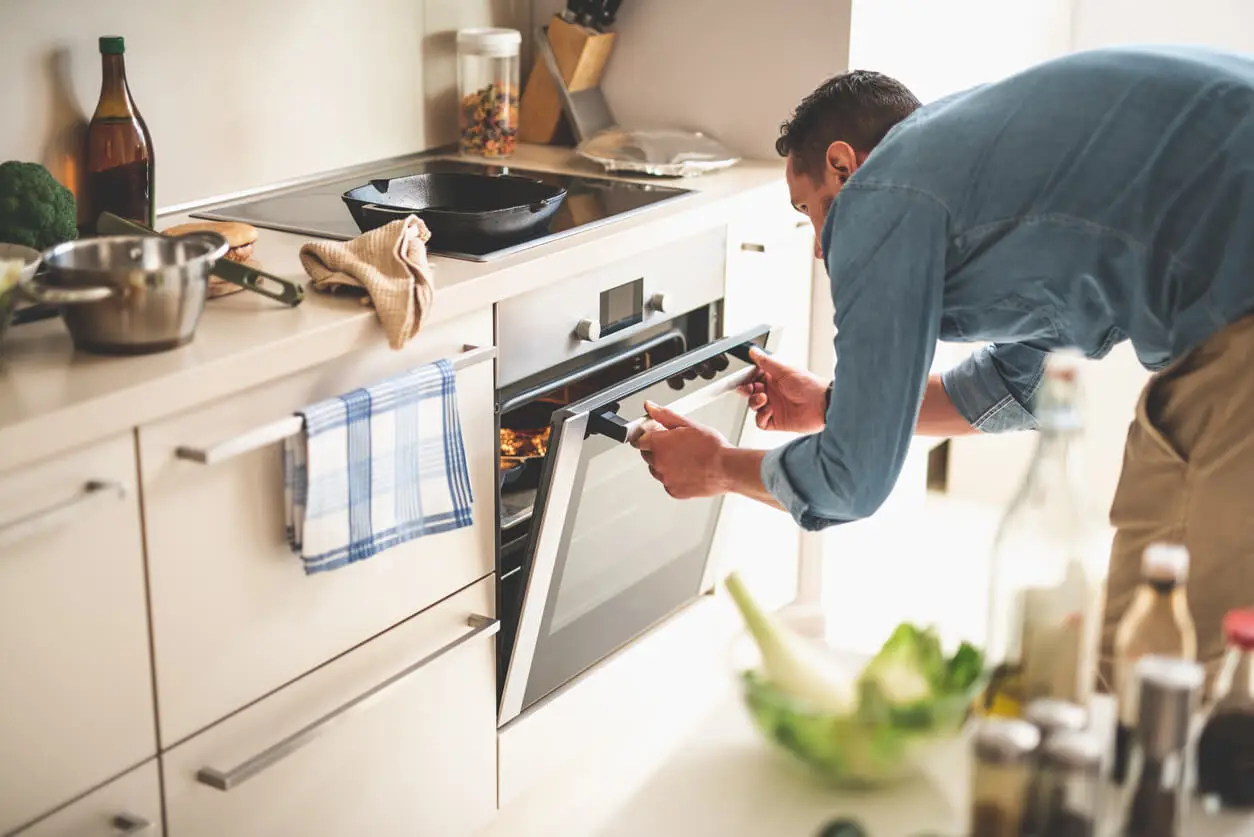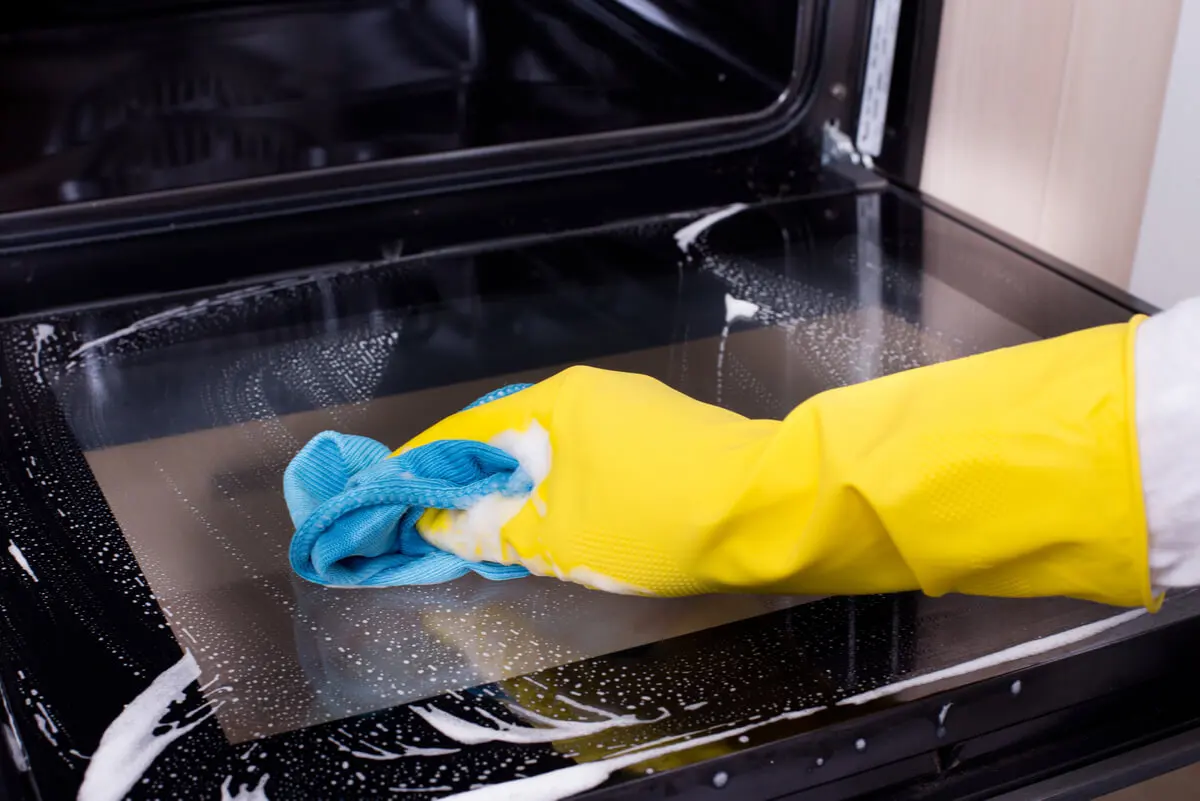6 Mistakes You May Make When Using the Oven

There are certain mistakes you can make when using the oven that affect its functionality. Although this appliance is one of the most practical appliances for a kitchen, inappropriate use can ruin recipes or reduce its useful life. So, how can you recognize them? In this article, we’ll take a look at the 6 most common ones.
Cooking is an art that is accompanied by tricks and secrets. Therefore, if you want to bake like a professional, it’s necessary that you take into account certain details. Whether it’s due to laziness or ignorance, it’s likely that on some occasion you’ve ruined a dish because of one of these common mistakes.
6 mistakes you can make when using the oven
The oven has become one of the favorite allies in the kitchens of millions of homes. Apart from offering the possibility of preparing hundreds of delicious recipes, it’s already within reach of many people.
However, it’s necessary to correct the mistakes you can make when using the oven, since your dishes’ success will depend on this. Continue reading to learn more!
1. Not preheating the oven before using it is a common oven mistake
This is one of the most important rules for the optimal use of this appliance. Before using it, you should always preheat your oven. This is not a simple whim, but something crucial.
You should try to preheat the oven at least 15 minutes before you are going to introduce your food so that the result is as expected and the cooking is as even as possible.

We think you may also enjoy reading this article: 10 Tricks for Eliminating Bad Odors from the Kitchen
2. Not setting recipes at the height they need
This is one of the frequent mistakes you may make when using the oven. Remember that you must know how to regulate the oven’s temperature so that your recipes don’t burn or, on the contrary, remain raw.
Did you know that the height at which you place the preparation inside the oven depends a lot on the type of cooking it requires? We’ll explain some of the basic rules to you:
- The upper part or the oven: This is the part of the oven that stores the most heat, so it’s ideal for very fast cooking, such as gratins or dishes that need to be heated as soon as possible.
- The middle part of the oven: This part is perfect for preparing fish, cakes, cookies, lasagna, and other recipes that require a longer cooking time.
- The lower part of the oven: This is the most recommended for dishes that require very long periods of time to cook completely, such as thick cuts of meat.
3. Open and close the oven constantly
At some point, this has probably happened to you: you’re baking a cake, and every now and then you open the door to check how it’s turning out. However, no matter how hard you check it, it never fluffs up. Why is this? Well, it’s probably due to the temperature change.
Most ovens have glass doors so you can keep an eye on your recipes without losing heat in the process. Every time you open the oven you can lose up to 50°C, which makes the cooking of your food uneven.
4. Using inadequate containers
When you’re a novice in the world of cooking, this is one of the most common mistakes you may make when using the oven. Not all containers or molds are suitable to withstand high temperatures.
For this reason, always use glass, earthenware, or stainless steel. Never use plastic containers, as they will start to melt in a short period of time.
5. Oven mistakes: Not cleaning the appliance after use
Cleanliness in the kitchen is essential to guarantee the health of the family and to ensure that the recipes are delicious. Just like the microwave, you should try to wash your oven with water and degreasing soap after using it.
White vinegar has been shown to be a good substitute for conventional chemicals that are sold for degreasing and disinfecting. Thus, it’s a natural cleaning option that you can use just for this purpose.
This will ensure that there are no traces of grease or dirt that can create odors in your next recipe. Imagine baking a cake after cooking a roast. If you don’t thoroughly clean the oven, the cake will most likely be impregnated with a meaty smell.

Like this article? You may also like to read: 6 Common Mistakes to Avoid when Decorating the Kitchen
6. Continuing to use a very old oven
Fortunately, ovens are no longer the privilege they once were. So, if possible, invest in a quality appliance. Making this investment will make cooking safer, faster, and more efficient.
Try to avoid these mistakes you can make when using your oven
Overall, paying attention to these mistakes you can make when using this appliance will allow you to get more out of it. Remember to invest in a quality appliance, preheat before using, and be aware of the cooking and temperature. Of course, also be sure to always clean up after use.
Taking care of your oven is not as difficult as it seems. Remember that constant maintenance ensures its proper functioning and extends its useful life.
All cited sources were thoroughly reviewed by our team to ensure their quality, reliability, currency, and validity. The bibliography of this article was considered reliable and of academic or scientific accuracy.
- Arias Flores, A. I. (2019). Evaluación a nivel laboratorio, de la acción desinfectante y desengrasante del vinagre sintético blanco al 4 %, con vida de anaquel caducada, como sustituto a productos químicos comunes (Doctoral dissertation, Universidad de San Carlos de Guatemala).
- Improve Your Kitchen and Food Safety. Am J Lifestyle Med. 2016;10(1):21-22. Published 2016 Jan 13. doi:10.1177/1559827615609043
This text is provided for informational purposes only and does not replace consultation with a professional. If in doubt, consult your specialist.








